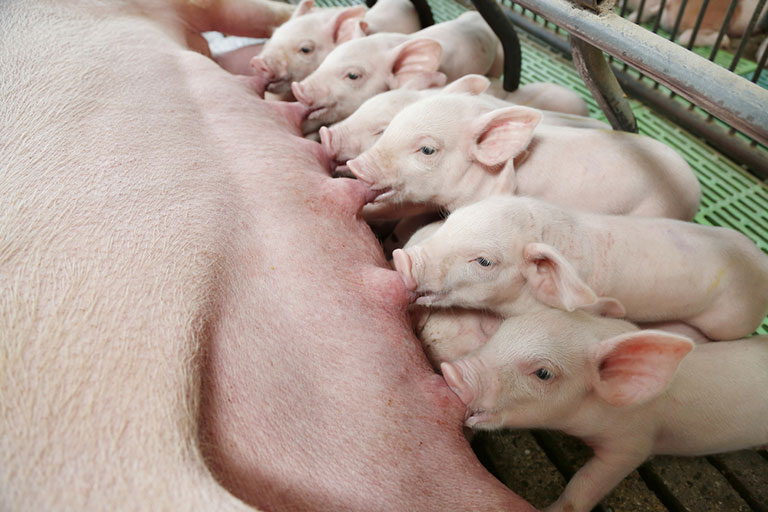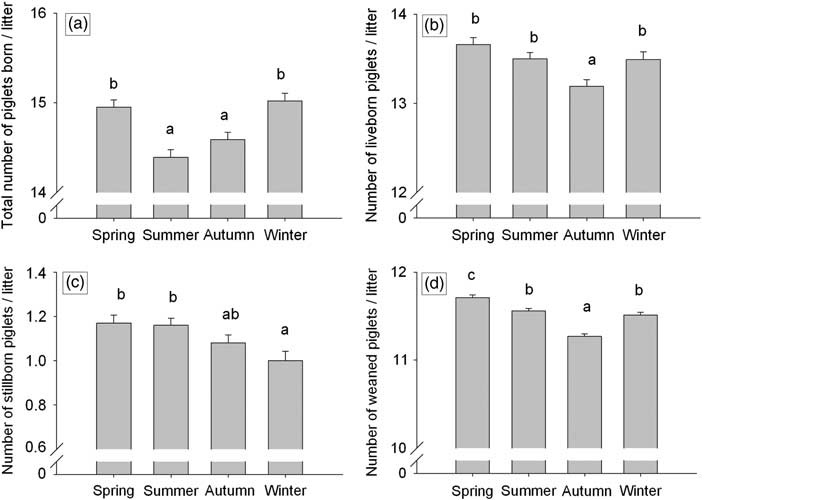
18 Jun Managing heat stress in sows
Thanasis Sougias, DVM NUEVO Swine Product Manager
According to literature, sows are submitted to heat stress in temperatures over 20-22 0C (upper limit of thermoneutral zone).
The rise in body temperature during summer months causes various reactions in sows, such as higher respiratory rate, shortness of breath and reduced feed intake.
In particular, the reduction in feed intake results in loss of body weight during lactation, when sows need to use their body reserves in order to meet their increased requirements. This leads to reduced reproductive capacity.
In practice, this situation negatively affects:
- the weight of born piglets
- milk production and weaning weight of piglets
- weaning to insemination interval (heat stress affects the secretion of LH hormone and reduces the onset of signs of estrus)
- fertility rate (affects the development of follicles)
- size of the next litter (inhibits embryonic development)
Especially the secretion of LH activated by:
- High feed intake during the previous dry period
- High feed intake during lactation
- High amino acid intake during lactation
- High starch levels in the lactation feed
Hence, the quality of nutrition and an adequate feed consumption have strong influence in the reproductive capacity of sows and in the management of heat stress.

Source: K. Wegner, C. Lambertz, G. Daş, G. Reiner and M. Gauly
Department of Animal Sciences, Georg August University, Albrecht-Thaer-Weg 3, 37075 Göttingen, Germany; Department of Veterinary Clinical Sciences, Justus Liebig University, Frankfurter Str. 112, 35392 Giessen, Germany (3 April 2014)
Figure 1. Impact of heat stress in the yields of sows
Managing negative impacts of heat stress
Some of the measures that can take place on a farm level, in view of the upcoming summer period, with emphasis on sow feed intake, are:
- Ventilation and cooling systems: control and maintenance of existing facilities and installation of new ones, where necessary.
- Control of sow body condition before farrowing. Avoidance of overweight sows.
- Water: Frequent check of the flow and quality, as well as the condition of the pipes. In summer, lactation sows consume 25 to 40 liters of water daily.
- Sow feed consumption recording. Smaller and more frequent meals during the day, fresh feed every time. Greater quantity of feed during the cooler hours of the day.
In that direction, an investment on a sow feeding system facilitates sow intake in summer while in the same time keeps the feed intake at the right levels during the year.
- Composition of feed ration: Administration of summer rations with high levels of amino acids, energy and crude fibre, as well as the use of additives such as:
Vitamin E
- Immunoglobulin precursor à supports immune system
- Prevents the oxidation of unsaturated fatty acids that can be found in high concentrations in high energy lactation rations.
- Helps to remove of free radicals
Vitamin C
- Significant antioxidant activity
- Essential for collagen metabolism
Betaine
- Optimize the utilization of energy
- Acts as a methyl group donor
- Osmoprotective activity à maintains water balance in cells, prevents dehydration, increases the osmotic power of cells à improves the digestibility of the nutrients
- Lipotropic activity, improves the utilization of lipids
Essential trace elements such as Calcium, Sodium, Potassium, Chlorine and Magnesium which naturally occur in body fluids and tissues as electrolytes involved with the maintenance of osmotic pressure and the acid-base balance.




